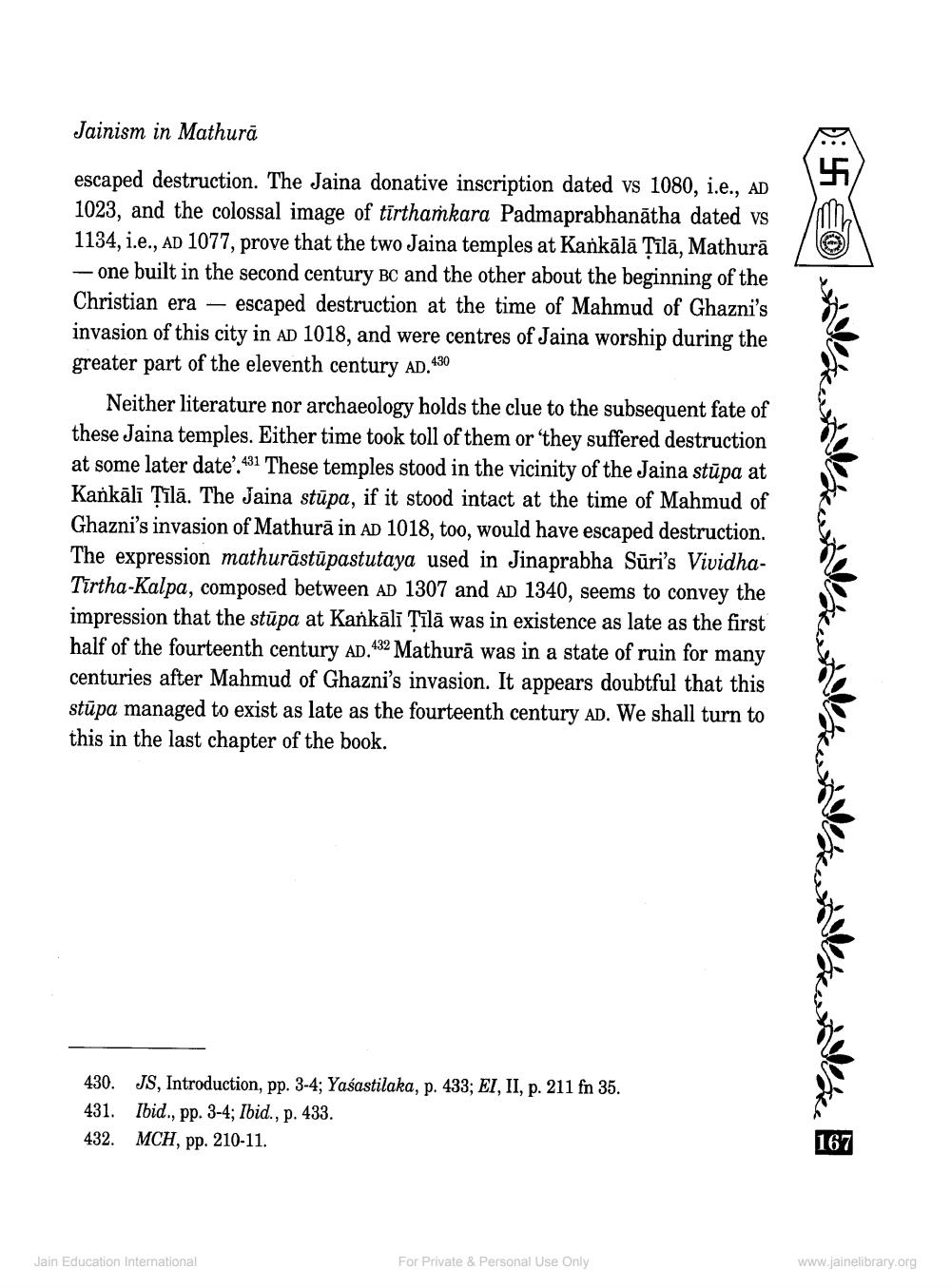________________
Jainism in Mathurā
escaped destruction. The Jaina donative inscription dated vs 1080, i.e., AD 1023, and the colossal image of tīrthařkara Padmaprabhanātha dated vs 1134, i.e., AD 1077, prove that the two Jaina temples at Kankālā ļīlā, Mathurā - one built in the second century BC and the other about the beginning of the Christian era — escaped destruction at the time of Mahmud of Ghazni's invasion of this city in AD 1018, and were centres of Jaina worship during the greater part of the eleventh century AD.430
Neither literature nor archaeology holds the clue to the subsequent fate of these Jaina temples. Either time took toll of them or 'they suffered destruction at some later date'.431 These temples stood in the vicinity of the Jaina stūpa at Kankālī Tīlā. The Jaina stūpa, if it stood intact at the time of Mahmud of Ghazni's invasion of Mathurā in AD 1018, too, would have escaped destruction. The expression mathurāstūpastutaya used in Jinaprabha Sūri's VividhaTīrtha-Kalpa, composed between AD 1307 and AD 1340, seems to convey the impression that the stūpa at Kankāli Țīlā was in existence as late as the first half of the fourteenth century AD.432 Mathurā was in a state of ruin for many centuries after Mahmud of Ghazni's invasion. It appears doubtful that this stūpa managed to exist as late as the fourteenth century AD. We shall turn to this in the last chapter of the book.
430. JS, Introduction, pp. 3-4; Yaśastilaka, p. 433; EI, II, p. 211 fn 35. 431. Ibid., pp. 3-4; Ibid., p. 433. 432. MCH, pp. 210-11.
167
Jain Education International
For Private & Personal Use Only
www.jainelibrary.org




